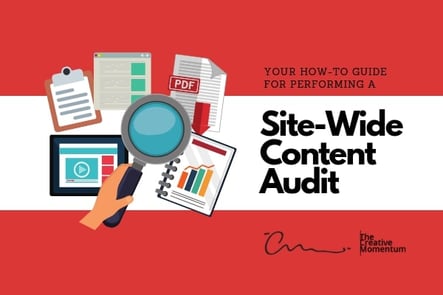
Content audits help you understand how each piece of content on your website fits into the marketing funnel. You can also gauge the effectiveness of your content as part of your marketing strategy when you conduct a thorough, site-wide content audit, but doing so can be an intimidating, complex undertaking. Here’s what you need to know.
Why You Should Perform A Content Audit
Search engine optimization hub Moz provides a succinct overview of a content audit’s purpose when conducted successfully.
"The purpose of a content audit for SEO is to improve the perceived trust and quality of a domain, while optimizing crawl budget and the flow of PageRank (PR) and other ranking signals throughout the site."
What does this mean? A thorough content audit is an exceptional way to rethink your content and marketing strategy, improve SEO, and increase visitor trust. The overarching goal of a good content audit is to cut away the fat (weak, low-quality content) while you add new, high-quality content throughout your site.
Benefits of a Content Audit
Overarching goals can help guide your content audit process, but it’s important to be subjective and intentional both before and during the audit. To help guide future improvements:
-
Edit and alter existing content copy
-
Update content to meet new search engine standards
-
Determine which content and pages rank for which keywords
-
Consolidate content covered in multiple areas of your website
-
Discover content and marketing gap opportunities
-
Drive traffic to certain web pages
Stale content that does nothing but sit on your website is wasted space. It wasn’t until Microsoft conducted a content audit that they realized thirty percent of their content had never been visited. You’ll never know what content on your website is stale unless you conduct an audit.
Phase One: Inventory Content and Define Goals
The nature of an audit, content or otherwise, is to take stock of what you have. You can make valuable changes when you know what content is already on your website and what areas need improvement. The research and inventory phase of your audit is a great time to perform a thorough, critical, unbiased SWOT analysis.
A SWOT analysis intended to steer a content audit looks at:
- Strengths: What are you doing well already? What are your website’s Key Performance Indicators (KPIs)? Determine which pages, what copy, and how much of your content drives your traffic and leads your conversions.
- Weaknesses: What can you improve? It can be difficult to take an unbiased step back and assess your website content’s weaknesses, but that’s what you have to do to make changes that matter.
- Opportunities: How do you turn your weaknesses into benefits? Are there gaps in your content that can be filled with new, valuable content? Look for quick wins, then add more challenging and rewarding content solutions to your opportunities list.
- Threats: Which content weaknesses are influenced most by external threats like direct competition or new search engine algorithm changes? Again, be critical and unbiased to uncover and understand content threats.
Phase one of your content audit is going to take time—from gathering important data like page titles, links, and keywords to assessing both internal and external threats and weaknesses—and that’s okay. It’s important to be thorough and honest with yourself during the audit process. The more information you can act on, the more successful your content will be in the long run.
Phase Two: Analyze the Data
You’ll most likely conduct some surface analysis during phase one of your content audit, but phase two is when you really dig in to understand the what and why behind current content success and failure.
Take a long, careful look at KPIs. Sitemaps, URLs, bounce rates, time on page, and all the in-between website metrics gathered during phase one of your audit need to be inspected and organized. Many businesses even create a content audit dashboard to house and organize all of the important data into hierarchies that makes sense. What you do during this phase of the content audit will help establish recommended actions after the audit is completed.
There’s no one-size-fits-all solution that every brand can follow for guaranteed success. Instead, use this phase in the audit process to track and analyze trends you can utilize to inform content changes.
Phase Three: Summarize and Report Findings
It’s during your summary and reporting phase that you’ll want to start separating current content into three categories: keep, edit, or remove. Strong content can stay, and weak content can either be consolidated, updated, or removed entirely. The hope is that the data you’ve collected and the way in which you’ve analyzed and organized it will lead to new content opportunities.
-
What are your marketing goals?
-
What are your content goals?
-
How can the two intermingle in a way that leads to conversions?
Sometimes, a content audit is necessary to realize that you must create a new content marketing plan. Other times, a content audit will reveal that your content and marketing teams have done a great job, and only minor changes are needed to realign with current goals.
Content Audits are Ongoing
Content audits should never be one-and-done projects. Successful content audits extend well beyond the three-phase undertaking outlined above. They continue to influence and shape content and marketing strategy as you reassess every so often, and with each new content addition comes another opportunity to conduct a mini audit. Take advantage of tools like Screaming Frog and Google Analytics or hire a professional to help with your content audit to save time and insure quality reporting. Try to apply the same audit process to other marketing channels like email or print to see what’s working, what isn’t, and what can be done to make improvements.

